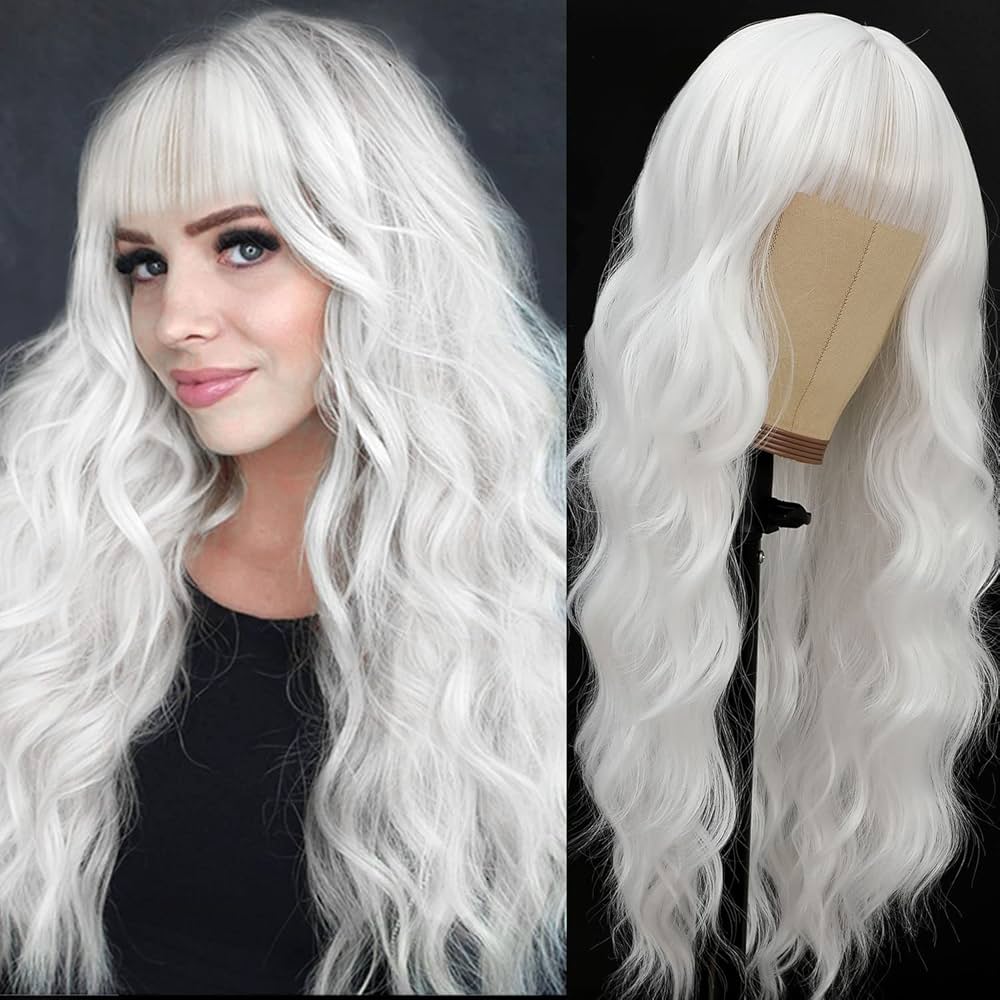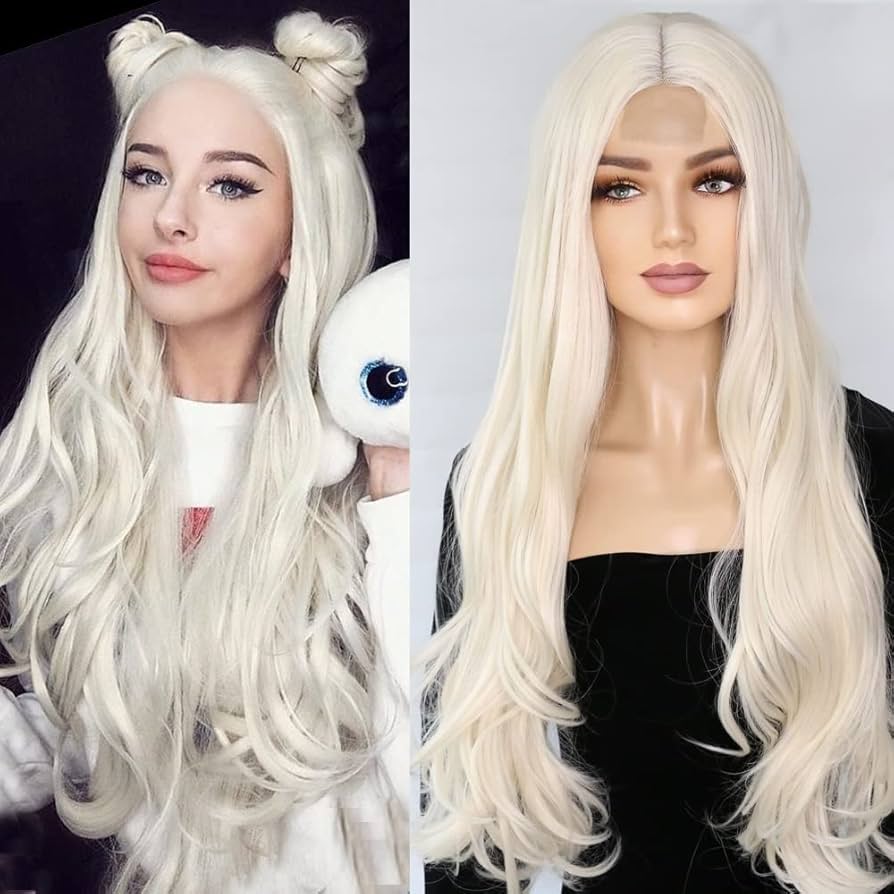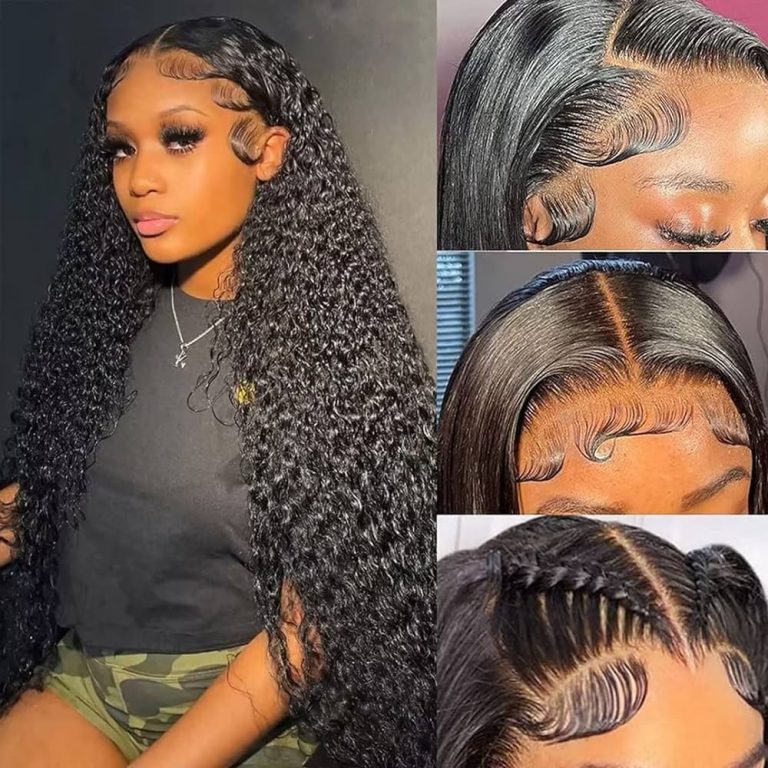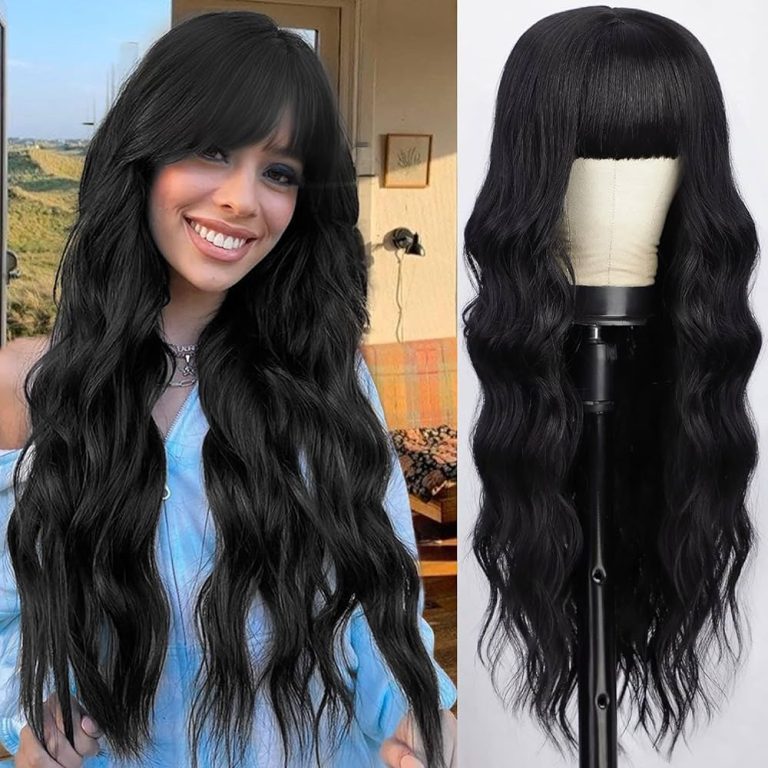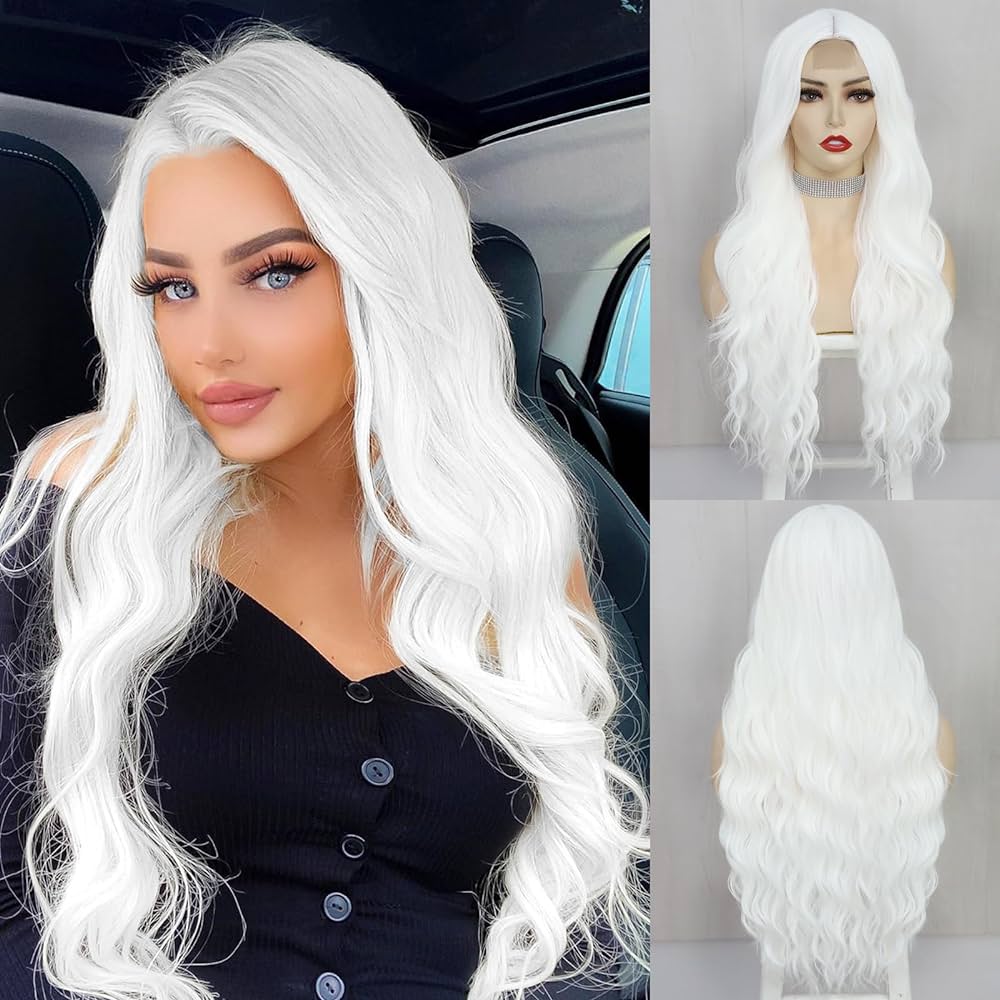
The Allure of White Wig: A Timeless Fashion Statement
The History and Evolution of White Wigs
White wig boast a rich history spanning centuries. Ancient Egyptians first popularized wigs as a symbol of status. The Romans later adopted wigs for both practical and aesthetic reasons. White wigs gained prominence in 17th century European courts. Louis XIV of France set the trend for elaborate, powdered wigs. These wigs, known as perruques, became a symbol of nobility. The fashion spread rapidly throughout Europe’s upper classes.
English barristers and judges adopted white wigs as part of their official attire. This tradition continues in some legal systems today. The 18th century saw the height of white wig popularity. Both men and women donned increasingly elaborate styles. Wigs became larger, more ornate, and heavily powdered. The French Revolution marked a decline in everyday wig-wearing. However, white wigs remained popular for formal occasions.
The Victorian era saw a resurgence of white wig use in theatrical productions. They became associated with historical and fantasy characters. The 20th century brought new materials and manufacturing techniques. Synthetic fibers allowed for more affordable and versatile white wigs. Hollywood embraced white wigs for period films and distinctive character looks. Iconic figures like Marilyn Monroe popularized platinum blonde wigs.
The fashion and beauty industries continue to reimagine white wigs. Modern interpretations range from sleek and sophisticated to wild and avant-garde. White wigs now serve various purposes beyond historical reenactment. They feature prominently in cosplay, drag performances, and high fashion. The enduring appeal of white wigs speaks to their versatility and impact. They continue to captivate and inspire across cultural boundaries.
Types and Styles of White Wigs
White wigs come in a vast array of styles and designs. Short white wigs offer a chic, modern look. Pixie cuts and bob styles provide versatile options for various occasions. Medium-length white wigs balance sophistication and manageability. These styles often feature layers for added volume and movement. Long white wigs make a dramatic statement. They can range from straight and sleek to voluminous and curly. Updo styles recreate historical looks or elegant formal hairstyles.
These include Marie Antoinette-inspired poufs and intricate braided designs. Lace front white wigs offer a natural-looking hairline. They allow for styling away from the face for a realistic appearance. Full lace white wigs provide the most styling versatility. These wigs can be parted anywhere and styled in various updos. Synthetic white wigs offer affordability and easy maintenance. They hold their style well but have limitations in heat styling.
Human hair white wigs provide the most natural look and feel. They can be styled with heat tools and colored if desired. Costume white wigs cater to specific character portrayals. These may include exaggerated features for theatrical effect. Avant-garde white wigs push the boundaries of conventional hairstyles. They may incorporate unconventional shapes, textures, or embellishments. Pastel-tinted white wigs offer a subtle twist on the classic look.
Pale pink, blue, or lavender hues add a whimsical touch. Ombre white wigs feature gradual color transitions. These can blend from pure white to another shade for added dimension. Textured white wigs embrace natural hair patterns. Curly, kinky, and coily styles celebrate diverse hair textures. The variety of white wig styles continues to expand. New designs cater to evolving fashion trends and personal expressions.
Choosing the Right White Wig
Selecting the perfect white wig requires careful consideration. Face shape plays a crucial role in wig selection. Oval faces suit most styles, while round faces benefit from longer, face-framing cuts. Square faces look great with soft, layered styles. Heart-shaped faces pair well with side-swept bangs and chin-length cuts. Consider the wig’s intended use when making a selection. Everyday wear demands durability and a natural appearance. Costume or performance use may prioritize dramatic effect over realism.
Cap construction affects the wig’s comfort and appearance. Wefted caps offer affordability but less styling versatility. Monofilament tops provide a natural-looking scalp and parting options. Lace front wigs allow for the most natural hairline appearance. Full lace wigs offer maximum styling flexibility but require more maintenance. Hair type influences the wig’s overall look and manageability. Synthetic fibers hold their style but limit heat styling options.
Human hair allows for more versatile styling but requires more care. Consider the level of shine when choosing a white wig. A high-gloss finish suits certain looks but may appear less natural. A more matte finish often provides a more realistic appearance. Density refers to the amount of hair on the wig. Lighter densities look more natural, while heavier densities offer more volume. Take accurate head measurements for the best fit. A well-fitting wig ensures comfort and a secure, natural-looking appearance. Consider the wig’s color undertone.
Cool, blue-based whites differ from warm, yellow-based whites. Choose the undertone that best complements your skin tone. Factor in the level of care and maintenance required. Some wigs need more frequent washing and styling than others. Budget plays a role in wig selection. Prices vary widely based on materials and construction quality. Trying on different styles helps in making the final decision. Many wig shops offer fitting services to assist customers.
Caring for and Maintaining White Wigs
Proper care extends the life and appearance of white wigs. Establish a regular cleaning schedule based on wear frequency. Synthetic wigs typically require washing every 4-6 wears. Human hair wigs may need washing every 7-10 wears. Use products specifically designed for wig care. Regular shampoos can damage wig fibers and affect color. Wash the wig in cool water to prevent fiber damage. Gently swish the wig in a mixture of cool water and wig shampoo.
Rinse thoroughly until the water runs clear. Apply a wig conditioner to keep fibers soft and manageable. Avoid rubbing or wringing the wig, which can cause tangling. Blot excess water with a towel and allow the wig to air dry. Use a wig stand to maintain the wig’s shape while drying. Avoid heat styling synthetic wigs, which can melt the fibers. Human hair wigs can be heat styled but require heat protectant products. Brush the wig gently using a wide-tooth comb or wig brush.
Start from the ends and work up to the roots to prevent tangling. Store the wig on a wig stand or in its original packaging. Keep it away from direct sunlight and heat sources. Refresh the wig between washes with a dry shampoo designed for wigs. This absorbs oils and odors, extending time between full washes. Address tangles and knots carefully to avoid damaging the wig.
Use a detangling spray and work through knots gently with fingers. Trim any loose or frayed ends to maintain a polished appearance. Consider professional wig maintenance for deep cleaning and restyling. Rotate between multiple wigs to extend their lifespan. This allows each wig time to rest and recover its shape. Proper care ensures white wigs remain beautiful and wearable for longer.

Styling Techniques for White Wigs
Styling white wigs requires specific techniques for best results. Start with a clean, detangled wig for easier styling. Use a wig stand to keep the wig secure during styling. For synthetic wigs, use steam to create or modify curls. A handheld garment steamer works well for this purpose. Rollers can create volume and waves in synthetic wigs. Use foam rollers and allow the wig to set overnight. Human hair wigs offer more styling options with heat tools.
Always use a heat protectant spray before applying hot tools. Curling irons create defined curls or waves in human hair wigs. Experiment with different barrel sizes for varied curl patterns. Flat irons can straighten curly wigs or create sleek, polished looks. Use the flat iron to add subtle bends for a natural-looking style. Teasing adds volume to both synthetic and human hair wigs. Use a teasing comb and work in small sections for best results.
Braiding creates interesting textures and patterns in white wigs. Try French braids, fishtails, or intricate crown braids for variety. Accessories enhance white wig styles beautifully. Headbands, clips, and decorative combs add personal flair. For updos, use bobby pins that match the wig color. Secure pins by crossing them for a stronger hold. Experiment with different parting styles to change the wig’s look. Side parts, center parts, or zigzag parts create varied effects.
Use styling products sparingly to avoid product buildup. Lightweight mousses and serums work well for most styling needs. For synthetic wigs, use specially formulated styling sprays. These provide hold without damaging the synthetic fibers. Create vintage looks with pin curls or victory rolls. These styles complement the classic appeal of white wigs. Remember that less is often more when styling white wigs. Overworking can lead to frizz or damage to the fibers.
White Wigs in Popular Culture and Fashion
White wigs hold a significant place in popular culture. They feature prominently in historical films and period dramas. Iconic characters like Mozart sport distinctive white wigs. In fantasy and science fiction, white wigs create otherworldly appearances. The “Star Wars” franchise uses white wigs for various alien species. Anime and manga embrace white wigs for distinctive character designs. Cosplayers recreate these looks for conventions and photo shoots.
The fashion industry regularly incorporates white wigs in runway shows. Avant-garde designers use them to create futuristic or surreal aesthetics. White wigs feature in editorial photoshoots for high-fashion magazines. They provide a striking canvas for makeup artists and stylists. Music videos often use white wigs to create memorable visual impacts. Artists like Lady Gaga have made white wigs part of their signature look. In theater, white wigs help establish character and time period.
They play a crucial role in productions of classic plays and operas. The drag community embraces white wigs for their dramatic potential. They allow for exaggerated, larger-than-life performances. White wigs appear in advertising to grab attention and create brand imagery. They can symbolize purity, luxury, or futuristic concepts. Halloween costumes frequently incorporate white wigs. They transform wearers into ghosts, vampires, or historical figures.
The bridal industry uses white wigs to complete fairytale wedding looks. They offer options for brides wanting a specific hairstyle without styling their own hair. White wigs continue to evolve in their cultural significance. They represent both nostalgia for the past and visions of the future. Their enduring presence speaks to their power as a visual medium. White wigs transcend mere fashion to become true artistic statements.
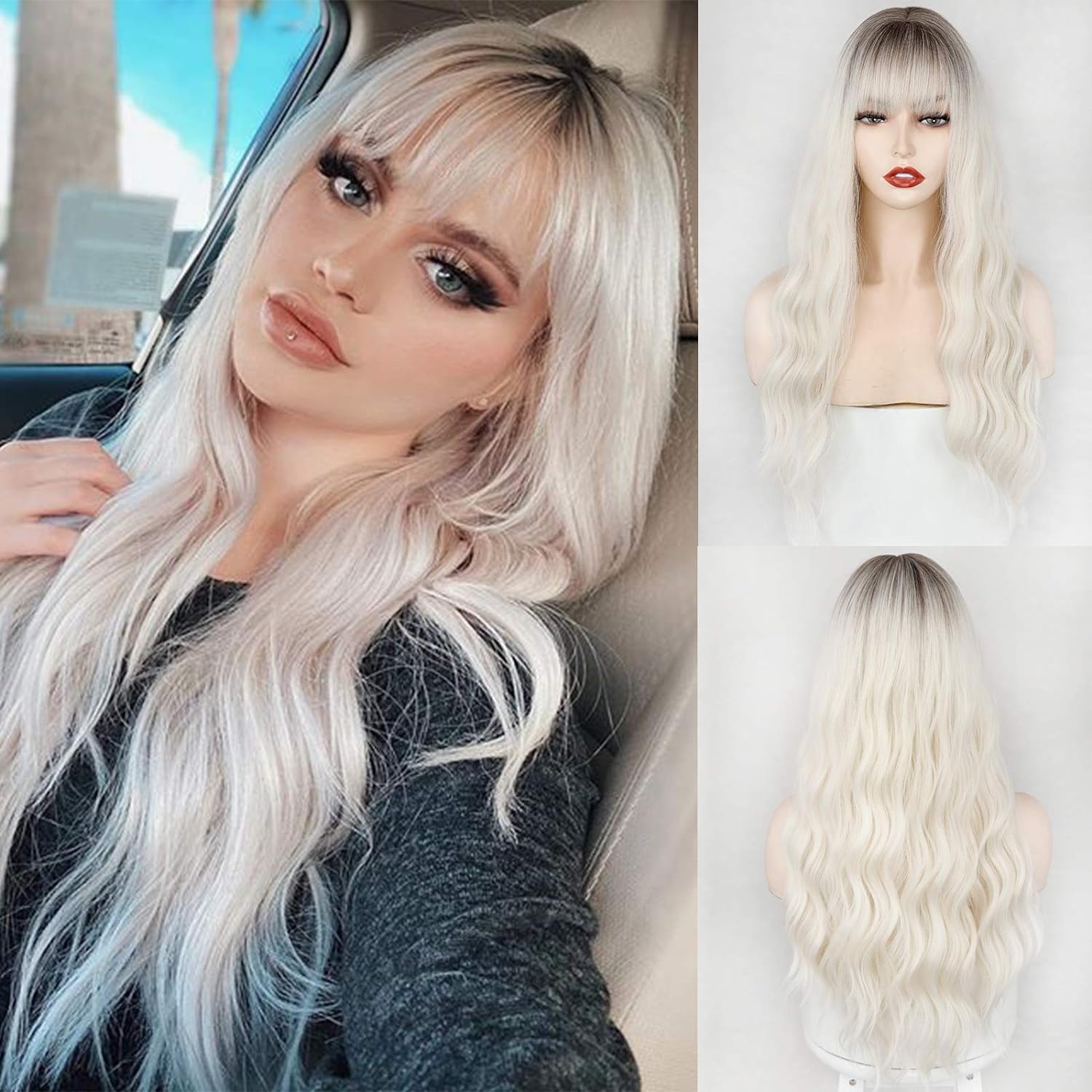
The Future of White Wigs: Trends and Innovations
The world of white wigs continues to evolve with new trends. Eco-friendly materials emerge in wig production. Sustainable fibers and ethical production methods gain popularity. Technology enhances the realism of white wigs. Advanced lace frontals mimic natural hairlines with incredible accuracy. 3D printing opens new possibilities in wig design. Custom-fit wig caps provide unparalleled comfort and security. Smart wigs incorporate technology for various functions.
Color-changing fibers respond to temperature or UV light. Augmented reality apps allow virtual try-ons of white wigs. This technology aids in selection and styling decisions. Innovations in fiber technology improve wig durability and manageability. Heat-resistant synthetic fibers expand styling options for affordable wigs. Customization becomes increasingly accessible. Made-to-order white wigs cater to individual preferences and needs.
Wig care products evolve to meet specific needs of white wigs. Specialized shampoos and conditioners maintain color brilliance. The fashion industry pushes boundaries with avant-garde white wig designs. Experimental textures and unconventional materials create unique looks. Wearable art incorporates white wigs in immersive experiences. Interactive installations feature wigs as central elements. The film industry demands ever more realistic white wigs. High-definition cameras require impeccable wig work for period productions.
Cosplay and convention culture drive demand for character-specific white wigs. Improved production techniques result in more accurate recreations. The beauty industry embraces white and platinum shades. This trend influences wig design for fashion-forward consumers. As society becomes more accepting of diverse expressions, white wigs gain popularity. They offer a form of self-expression beyond traditional hair colors. The future of white wigs looks bright and innovative. Continued advancements promise exciting developments in this timeless accessory.
